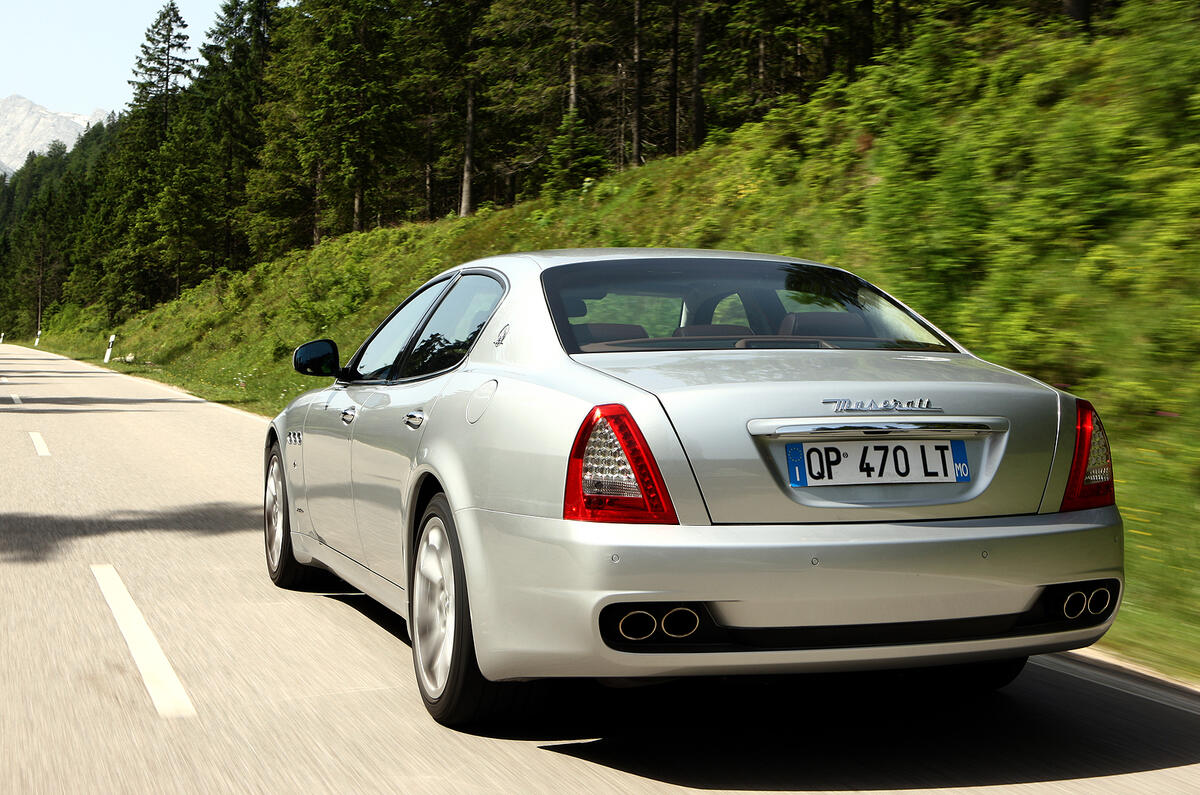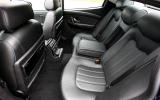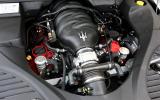The Frua-styled 260bhp quad-cam V8 Maserati Quattroporte 1 was 1963’s fastest four-door. With a heavy Bertone body and 190bhp V6, its 1975 successor attracted just five buyers in two years.
A year on and the Quattroporte 3 revived V8 power and rear drive. With a new name – Royale – the ItalDesign-penned car soldiered on until 1987. There followed a seven-year wait for the Quattroporte 4 designed by Gandini, whose turbocharged V6 and V8 engines kept it alive until 2001.
So hopes were high when the Quattroporte 5 was launched in 2004 as a rival to the likes of the Mercedes-AMG E63 and Mercedes-AMG S 63, Jaguar XJR and the breathtaking BMW M5.
To truly take them on, however, the Quattroporte needs to combine sports car handling and limousine luxury, while retaining the unique character of Maserati.
The range now comprises four variants: the standard 4.2-litre Quattroporte, the 4.7-litre S, the Sport GT and Sport GTS – the latter is the most powerful saloon the company has ever built.




























